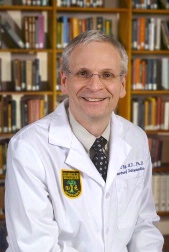URMC Orthopaedics Research, Clinical Work, Highlighted at Meeting
URMC Orthopaedics Research, Clinical Work, Highlighted at Meeting
Faculty Experts Discuss Bisphosphonates, Lead Exposure, Staph Infection
The University of Rochester Medical Center Orthopaedics faculty made a strong showing last week at the Orthopaedics Research Society annual meeting Jan. 13 to 16, 2011, in Long Beach, Calif. Several researchers and clinicians attended and presented data on topics as diverse as methicillin-resistant staph infection and lead poisoning of the bones.
Here is a roundup of key presentations:
– Edward M. Schwarz, Ph.D., professor of Orthopaedics and associate director of the URMC Center for Musculoskeletal Research, and John Varrone, a second-year graduate student in Schwarz’s lab, discussed the development of a vaccine to prevent life-threatening methicillin-resistant staphylococcus aureus (MRSA) infections following bone and joint surgery. (See separate news release.)
– Susan V. Bukata, M.D., associate professor of Orthopaedics, presented a Spotlight Session on Jan. 13 titled “Bisphosphonates: The Good, the Bad and the Ugly in Fractures.” Her talk addressed clinical issues related to bisphosphonates – drugs that can help reverse the effects of osteoporosis – and how practitioners can optimize their use in clinical practice.
– Bukata also served as moderator for a symposium regarding bisphosphonates. Panelists included Regis J. O’Keefe, M.D., Ph.D., chair of the URMC Department of Orthopaedics, as well as physicians from Cornell University and Hospital for Special Surgery. Experts discussed atypical fractures of the femur and how to determine through research which patients are at risk and who may require adjustments in their osteoporosis treatments.
– Edward Puzas, Ph.D., senior associate dean for basic research at URMC and Donald and Mary Clark Professor of Orthopaedics, and colleagues presented data on lead exposure and osteoporosis. Eric Beier, a graduate student in the Puzas lab, is doing his dissertation on the mechanism by which lead interferes with normal bone formation. They discovered that protein factor sclerostin plays a major role with lead in producing toxicity in the skeleton. Another graduate student in the Puzas lab, Diana Metz-Estrella, presented research about a new gene that controls bone metabolism.
Edward M. Schwarz, Ph.D.
Susan V. Bukata, M.D.
Regis J. O’Keefe, M.D., Ph.D.
Edward Puzas, Ph.D.





* The above story is reprinted from materials provided by University of Rochester Medical Center



















